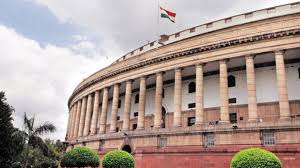Inspiration Behind Old Parliament Architecture
The Indian Parliament’s historical journey of 75 years is coming to a close as it bids farewell to its iconic circular building, which has symbolized the nation’s democratic aspirations. Designed by British architects Lutyens and Baker, the building served as the Imperial Legislative Council during British rule and later as the Constituent Assembly and Parliament of India. Interestingly, its design was influenced by India’s architectural heritage, emphasizing the integration of Indian elements.
The Chausath Yogini temple in Mitaoli, Madhya Pradesh, is believed to have predated the Parliament by centuries and may have inspired its circular, pillared structure. Built in the 14th century, this temple is dedicated to 64 powerful yoginis and features unique architectural elements, including a hypaethral design with no roof and a central shrine dedicated to Lord Shiva.
The temple’s connection to the Parliament’s design remains speculative, but it continues to stand as a testament to India’s rich architectural history.
Did the Chausath Yogini temple inspire the Parliament’s design?
While there is no concrete evidence that architects Lutyens and Baker visited the Chausath Yogini temple, local belief and the temple’s resilience in earthquakes have led to speculation that it could have influenced the Parliament’s design.
Who were the 64 yoginis and what role did they play in mythology?
The 64 yoginis are believed to be powerful warriors and sorceresses in Hindu mythology. They played a crucial role in defeating the demon Raktabija by preventing his blood from falling to the ground, ultimately leading to his defeat.
What architectural features make the Chausath Yogini temple unique?
The Chausath Yogini temple is circular, hypaethral (roofless), and contains 64 chambers dedicated to the yoginis, with a central shrine for Lord Shiva. This design sets it apart from conventional Hindu temples.
Why did British architects Lutyens and Baker integrate Indian elements into their designs for New Delhi?
Viceroy Lord Hardinge emphasized the inclusion of Indian architectural elements to ensure that the buildings in New Delhi did not appear as foreign structures transplanted onto Indian soil, thus resulting in a fusion of Indian and Western architectural styles.
Month: Current Affairs - September, 2023
Category: India Nation & States Current Affairs







